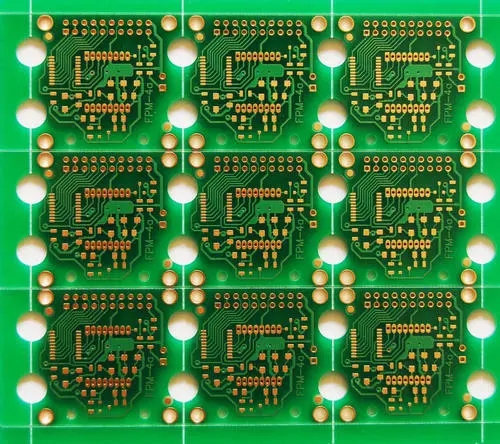Talking about differential routing
Differential signal (Differential Signal) is more and more widely used in high-speed PCB design. The most critical signal in the circuit is often designed with a differential structure. What makes it so popular? How to ensure its good performance in PCB design? With these two questions, we proceed to the next part of the discussion.

What is a differential signal? In layman's terms, the driving end sends two equal and inverted signals, and the receiving end judges the logical state "0" or "1" by comparing the difference between the two voltages. The pair of traces carrying differential signals is called differential traces.
Compared with ordinary single-ended signal traces, differential signals have the most obvious advantages in the following three aspects:
a. Strong anti-interference ability, because the coupling between the two differential traces is very good. When there is noise interference from the outside, they are almost coupled to the two lines at the same time, and the receiving end only cares about the difference between the two signals. Therefore, the external common mode noise can be completely canceled.
b. It can effectively suppress EMI. For the same reason, due to the opposite polarity of the two signals, the electromagnetic fields radiated by them can cancel each other out. The tighter the coupling, the less the electromagnetic energy released to the outside world.
c. The timing positioning is accurate. Because the switch change of the differential signal is located at the intersection of the two signals, unlike the ordinary single-ended signal, which depends on the high and low threshold voltages to determine, it is less affected by the process and temperature, which can reduce the error in the timing., But also more suitable for low-amplitude signal circuits. The current popular LVDS (low voltage differential signaling) refers to this small amplitude differential signaling technology.
For PCB engineers, the most concern is how to ensure that these advantages of differential wiring can be fully utilized in actual wiring. Perhaps anyone who has been in touch with Layout will understand the general requirements of differential wiring, that is, "equal length and equal distance". The equal length is to ensure that the two differential signals maintain opposite polarities at all times and reduce the common mode component; the equal distance is mainly to ensure that the differential impedances of the two are consistent and reduce reflections. "As close as possible" is sometimes one of the requirements of differential wiring. But all these rules are not used to mechanically apply, and many engineers seem to still not understand the essence of high-speed differential signal transmission.
The above is the introduction of differential wiring. Ipcb is also provided to PCB manufacturers and PCB manufacturing technology.